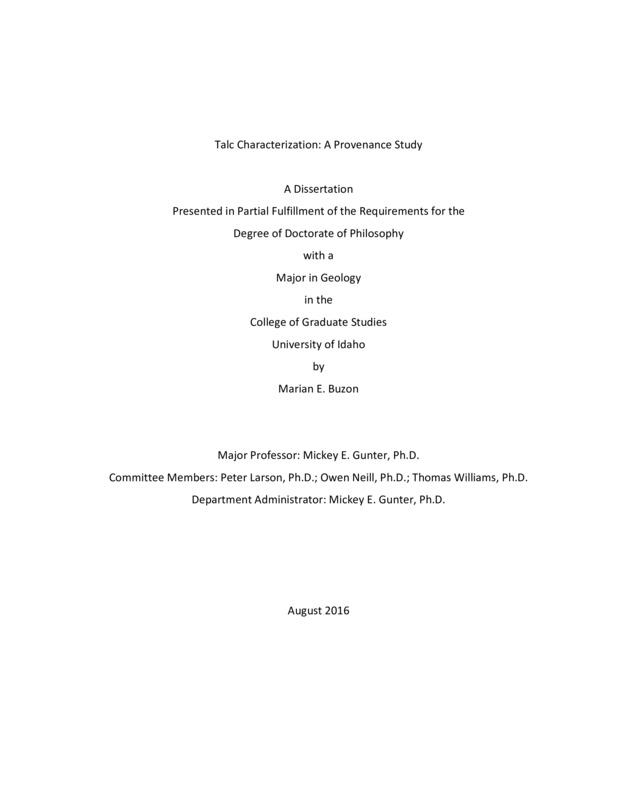Talc Characterization: A Provenance Study
Buzon, Marian E.. (2016). Talc Characterization: A Provenance Study. Theses and Dissertations Collection, University of Idaho Library Digital Collections. https://www.lib.uidaho.edu/digital/etd/items/buzon_idaho_0089e_10981.html
- Title:
- Talc Characterization: A Provenance Study
- Author:
- Buzon, Marian E.
- Date:
- 2016
- Embargo Remove Date:
- 2017-02-16
- Keywords:
- asbestos talc
- Program:
- Geology
- Subject Category:
- Geology; Mineralogy
- Abstract:
-
Talc is a useful mineral in many industries and therefore has a high probability that consumers are exposed to it and other minerals present in ores. Some of these accessory minerals may be classified as asbestos while others are known to be harmless. The conditions of talc formation at a given deposit determine the resulting mineralogy. In many instances, asbestos is “identified” in talc ores and products based on crude assumptions, misunderstanding of nomenclature, or improper interpretations of analytical results. Purported asbestos content in talc ores and products has been the focus of recent civil litigation, typically brought by victims of mesothelioma, a cancer that is causally associated with asbestos exposure but is not linked specifically to talc itself. The geology of many economic talc deposits is well known, leading us to wonder if commercial talc could be traced back to the type of deposit in which it formed. Furthermore, could this information be used in litigation to support or deny the likelihood of asbestos in talc products with a known source?
This project involves the use of a suite of analytical methods to determine 1) what mineral phases are present in talc ores, 2) the bulk major and trace element concentrations of ores from a selected talc deposit and how the compositions relate to the mineral content, and 3) what, if any, compositional or morphological differences exist between talc that has formed from different protoliths and processes? We are considering provenance in the context of the location the talc is from and more importantly the processes that were involved in talc formation. The resulting information will be compiled in a database including results from powder x-ray diffraction, electron micro-probe, x-ray fluorescence spectroscopy, and stable isotope analyses.
Chapters 1 and 3 include the mineralogy, compositions, and morphologies of our commercial talc samples. Chapter 2 is a more focused view of all the data for talc from southwest Montana, which is a highly producing talc mining region, and the issues resulting from asbestos-related litigation.
- Description:
- doctoral, Ph.D., Geology -- University of Idaho - College of Graduate Studies, 2016
- Major Professor:
- Gunter, Mickey E
- Committee:
- Larson, Peter; Neill, Owen; Williams, Thomas
- Defense Date:
- 2016
- Identifier:
- Buzon_idaho_0089E_10981
- Type:
- Text
- Format Original:
- Format:
- application/pdf
- Rights:
- In Copyright - Educational Use Permitted. For more information, please contact University of Idaho Library Special Collections and Archives Department at libspec@uidaho.edu.
- Standardized Rights:
- http://rightsstatements.org/vocab/InC-EDU/1.0/

